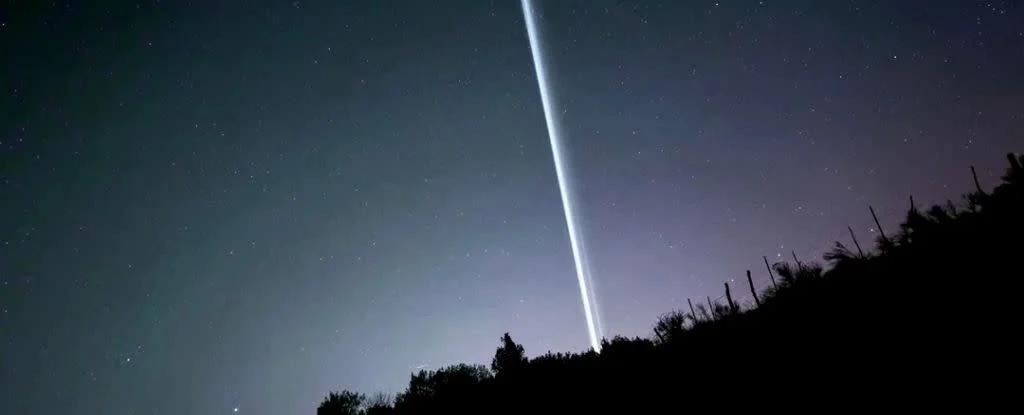
Mysterious Light Streaks Over US During Aurora Storm: Rocket Fuel or Something Else?
A peculiar sight baffled skywatchers across the US on the night of May 17: a bright, white streak cutting through the sky during an unexpected aurora storm. Initially mistaken for STEVE (Strong Thermal Emission Velocity Enhancement), a rare atmospheric phenomenon, the luminous cloud turned out to have a more earthly origin.

Jonathan McDowell, an astronomer tracking space activity, identified the culprit as the upper stage of a Chinese Zhuque-2E rocket launched by LandSpace Technology. The rocket stage was dumping methalox rocket fuel at an altitude of approximately 250 kilometers (155 miles), directly into the ionosphere.
At 04:12 UTC, LandSpace, a Beijing-based startup, launched its Zhuque-2E Y2 methane-fueled carrier rocket from the Jiuquan Satellite Launch Center, carrying six satellites into Earth orbit. Roughly an hour later, the luminous stripe appeared in the sky over the US.
"The aurora was rippling low on the northern horizon when suddenly a bright streak of light, reminiscent of a rocket re-entry, appeared high in the sky and flowed down to the horizon,” photographer Mike Lewinski told Spaceweather.com. He captured the event unfolding above Crestone, Colorado.

Methalox, rocket fuel made from methane and liquid oxygen, is gaining popularity because it’s cheaper, cleaner, and easier to store. LandSpace successfully launched the first methalox rocket back in 2023. Its potential to be produced on Mars also makes it attractive for future crewed missions to the red planet.
The glowing rocket fuel results from chemical reactions in the ionosphere. As explained by physicists led by Paul Bernhardt of the US Naval Research Laboratory in a 2012 paper, “If the plume is fired into the ionosphere at night, chemiluminescent reactions with ion-molecule charge exchange followed by electron-ion dissociative recombination yield a long-lived glow that can be observed from ground or space.”
While rocket fuel glowing in the upper atmosphere usually appears as a spiral, this instance was a streak alongside auroras, a new experience for skywatchers. As more companies explore using methalox, such streaks may become more common.
The increased pace of rocket launches raises environmental and social concerns despite providing improved internet access and data collection. What are your thoughts on this surge in space activity? Share your perspective in the comments below!